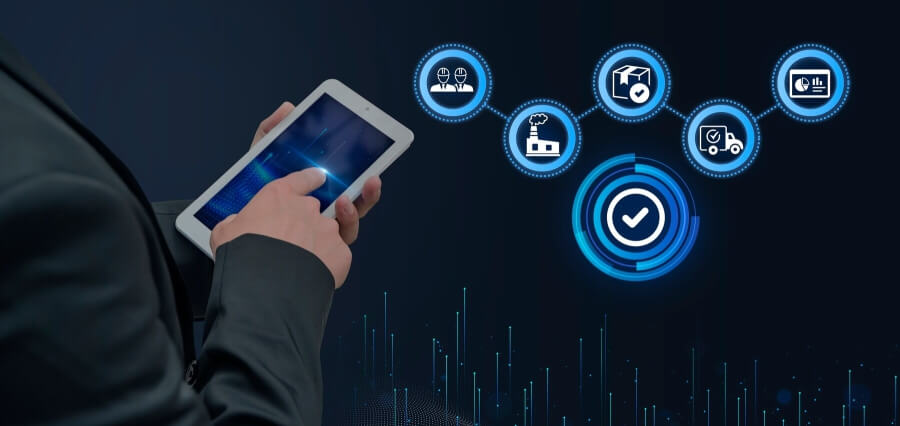For those embarking on cybersecurity learning, integrating mind maps into your study regimen can transform a daunting task into a manageable and even enjoyable one. As the landscape of cybersecurity education evolves, online CISSP courses by region offer localized insights and resources, making the certification more accessible to a global audience. In this article, we’ll delve into five innovative ways to incorporate mind maps into your cybersecurity learning journey, highlighting how this tool can revolutionize your study practices.
Visualizing Complex Concepts
The journey through cybersecurity’s vast landscape is akin to navigating a labyrinth filled with technical jargon and intricate processes. The use of mind maps illuminates this path, transforming abstract cybersecurity concepts into clear, visual diagrams. This method not only aids in grasping the intricacies of cybersecurity but also in connecting these concepts to real-world applications. As learners chart the territories of network security, encryption, and compliance through mind maps, they construct a mental framework that supports the retention and application of knowledge, paving the way for a deeper exploration into the field.
The intricate nature of cybersecurity concepts often poses a significant challenge to learners. Mind maps address this by breaking down complex ideas into more digestible, interconnected elements. This visual representation enables learners to see the relationships between different cybersecurity domains, fostering a deeper understanding and retention of information. Mind maps make abstract concepts tangible by visualizing concepts like network security architectures or encryption algorithms, facilitating easier recall and application in real-world scenarios.
Enhancing Memory Retention
Mind maps naturally extend their utility to bolster memory retention. This technique aligns with our cognitive processes, wherein visual associations facilitate quicker recall and deeper understanding. As learners navigate the expansive domains of cybersecurity, from threat models to security protocols, mind maps serve as anchors, enabling them to tether abstract ideas to visual representations. This not only enriches the learning experience but also ensures that crucial information is readily accessible, especially when delving into the more nuanced aspects of cybersecurity.
Linking Ideas for Better Recall
Mind maps excel in enhancing memory retention by leveraging the brain’s natural inclination for visual information. By organizing study materials in a format that mirrors the way our brains process information, mind maps increase the likelihood of recall. This method not only aids in memorizing key facts but also in understanding the underlying principles of cybersecurity, ensuring a solid foundation is built.
Streamlining Study Sessions
The path to mastering cybersecurity is often cluttered with an overwhelming amount of information, making it crucial to adopt an organized approach to study sessions. Mind maps emerge as a beacon of efficiency in this regard, offering a structured framework that distills complex information into digestible pieces. This strategic organization fosters an environment where learners can focus on refining their understanding of specific areas, such as cybersecurity laws or digital forensics, without losing sight of the broader context.
The process of preparing for cybersecurity certifications can often feel overwhelming due to the sheer volume of information involved. Mind maps simplify this by organizing study materials into coherent, easy-to-navigate diagrams. This organized approach allows learners to efficiently allocate their study time, focusing on areas that require more attention. By highlighting connections between different topics, mind maps ensure a more structured revision process, making study sessions more productive.
Facilitating Active Learning
As learners construct their mind maps, they embark on a journey of discovery, where each connection made is a step towards unraveling the complexities of cybersecurity. This active participation reinforces learning and cultivates the analytical skills necessary for tackling real-world security challenges, preparing learners for the multifaceted nature of cybersecurity endeavors.
Active engagement with study materials is crucial for effective learning. Mind maps encourage this by involving learners in the creation process, from organizing information to identifying relationships between concepts. This hands-on approach promotes a deeper understanding of cybersecurity principles and encourages critical thinking, an essential skill for any cybersecurity professional.
Aiding in Exam Preparation
As the culmination of the learning journey approaches, mind maps prove indispensable in exam preparation, offering a customizable and comprehensive review tool. This adaptability ensures that learners are not just memorizing facts but are also synthesizing knowledge, a vital skill for navigating the multifarious questions encountered in cybersecurity exams. By leveraging mind maps in their revision strategy, learners can approach their certification exams with confidence, armed with a deep and well-organized understanding of cybersecurity principles.
Conclusion: A Complex Journey of Discovery
The integration of mind maps into your cybersecurity learning journey offers a range of benefits, from improved understanding and retention of complex concepts to more efficient study sessions. As the cybersecurity field continues to evolve, leveraging innovative learning strategies like mind maps will be crucial in staying ahead. Whether you’re just starting your journey or looking to deepen your knowledge, mind maps can be a powerful ally in achieving your cybersecurity certification and career goals.


